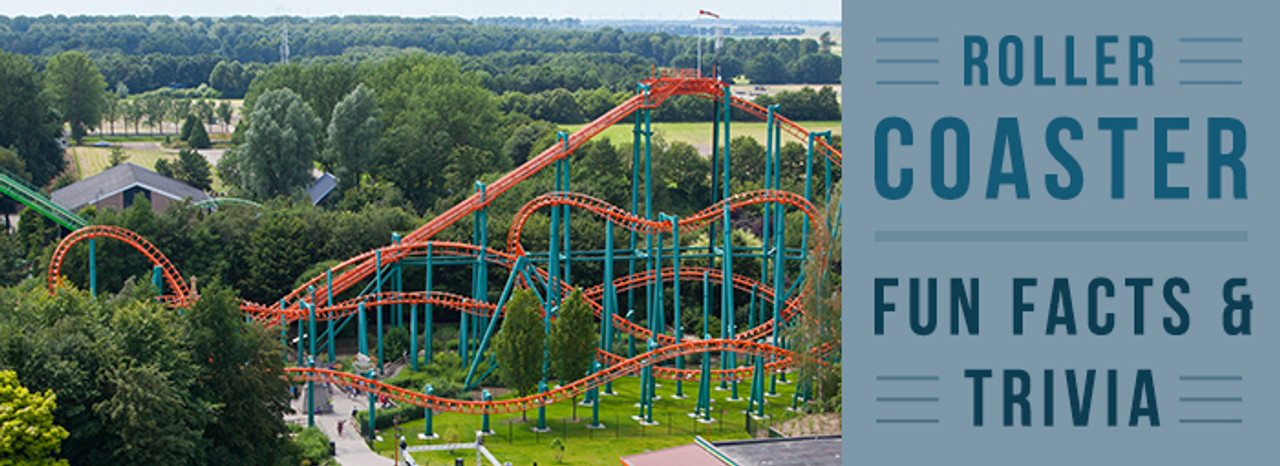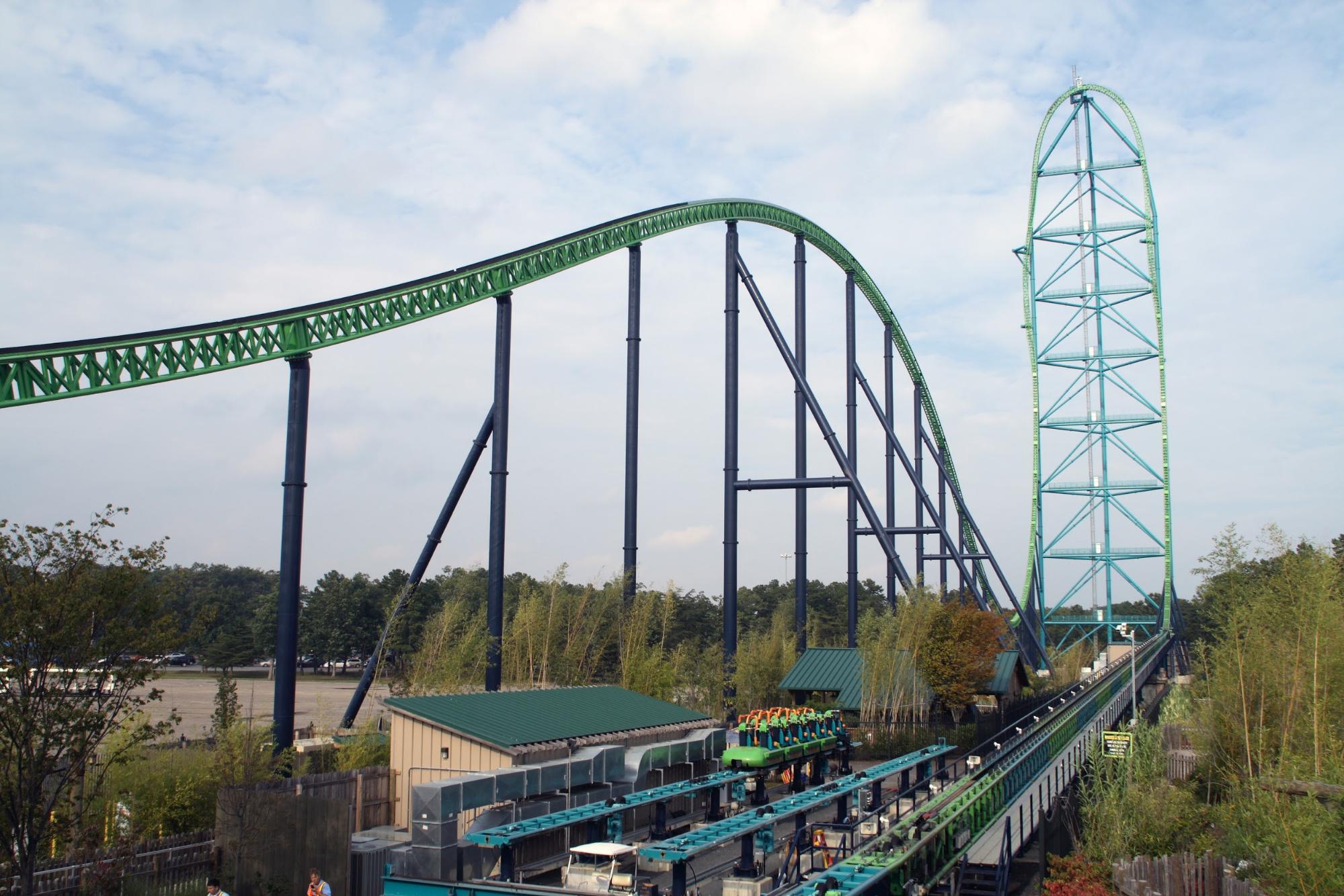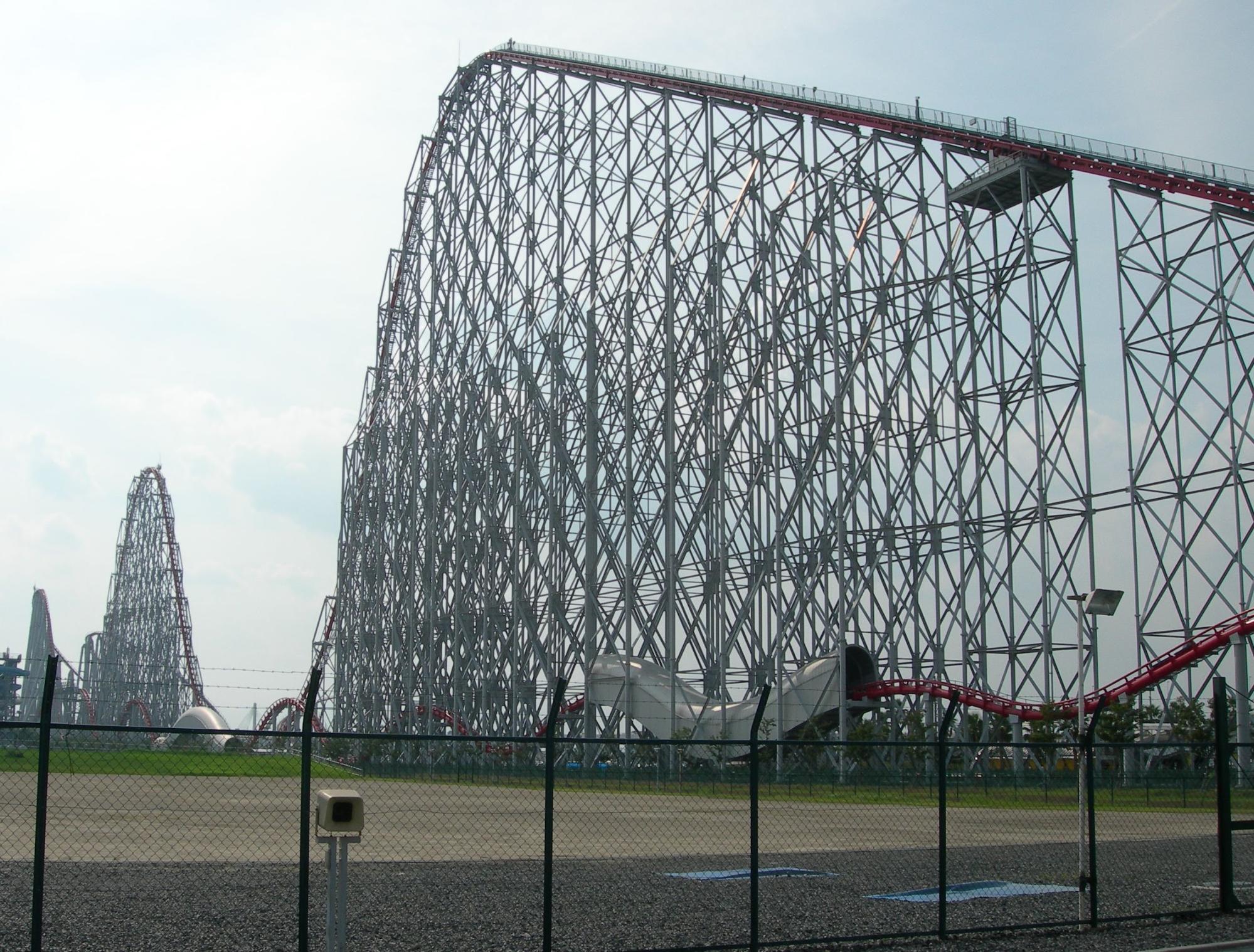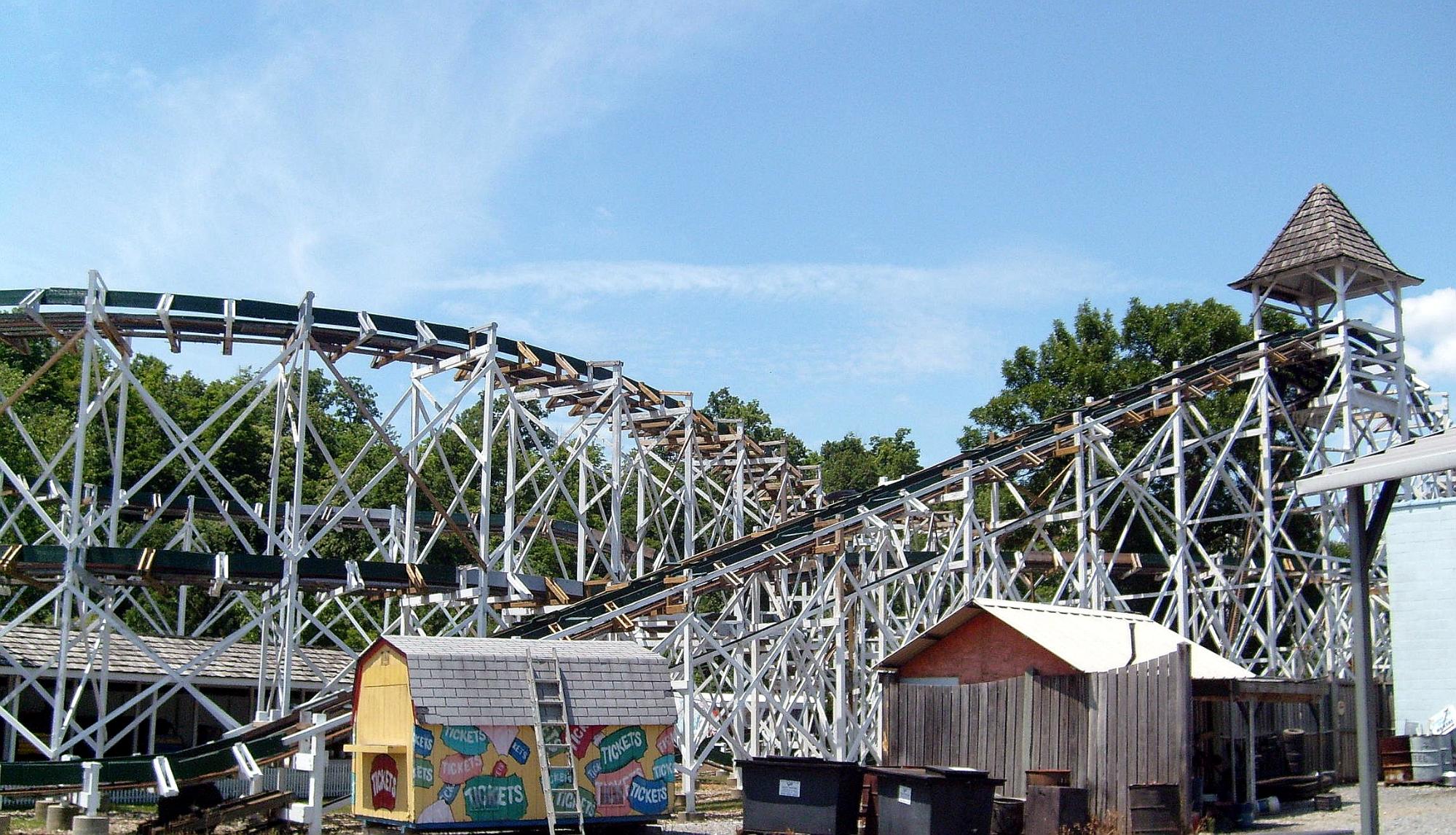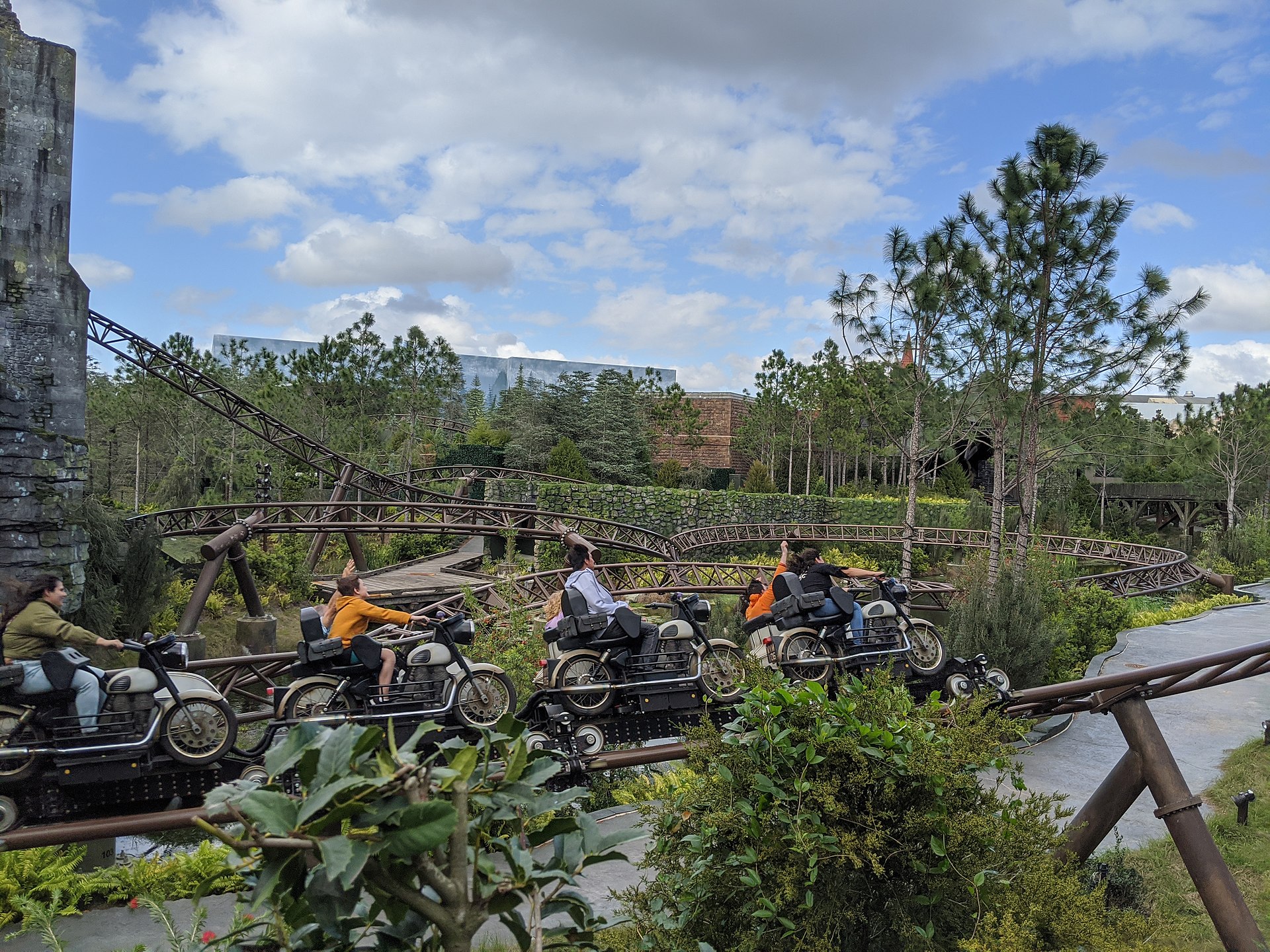Do you like roller coasters? We do too. At Trash Cans Unlimited, we know that roller coasters, like theme park trash cans, contribute to the success of the park. In this blog, we’ve outlined a bunch of different coaster facts and history to give you insight into some of the weird and wild history of these machines.
Who actually invented roller coasters?
This is a tricky question. There were many precursors and prototypes, but the best place is probably to start with Catherine the Great, Empress of Russia. She got the idea from 17th-century ice slides that were popular in the region during the colder months. She had her palace add wheels and grooved tracks to make a summer version of these ice slides at her palace in 1784.
The earliest rides in which people boarded a vehicle and rolled down sloping hills were introduced at the Russian Imperial Summer Palace in the late 18th Century.
In 1812, the Belleville Mountains (Les Montagnes Russes de Belleville) and the Aerial Walks (Promenades Aériennes) in Paris improved on the original Russian Mountains by adding locking wheels, continuous tracks, and, eventually, cables that hoisted cars to the top of the hill.
Mauch Chunk Switchback Railway
Next up, we have Josiah White. He built the gravity railroad in 1827 to haul coal from the mines at Summit Hill to the Lehigh River landing at Mauch Chunk (now the town of Jim Thorpe) a 9-mile (14.5-km) downhill journey. Trains with as many as 14 cars loaded with 50,000 pounds of coal sped down the mountain under the command of a single runner, who manned a brake lever. Then mules would drag the cars back up the mountain. Passengers would often pay for the privilege of getting to defy death by racing down the mountain on Gravity

Trolley Parks
Charles J. Van Depoele was the early inventor of the trolley park concept, which appeared in the late 1800s This was mainly designed to increase revenue for trolley companies on the weekends. Electric light and power companies charged the traction companies a flat monthly fee for electricity on which they ran their trolleys. It didn't matter how much or how little the trolleys were used. Trolley magnates like Van Depoele became frustrated because little need existed to operate trolleys during the weekends although they still had to pay for the electricity to operate their systems. A solution was to get the general public to ride the trolleys on Saturdays and Sundays. Thus the trolley park was born.
The Switchback Railway
On June 16, 1884, the first roller coaster in America opened at Coney Island, in Brooklyn, New York. Designed by LaMarcus Thompson, it’s what’s known as a gravity switchba
ck railway, and you can still see it today. Thompson later patented scenic railways, which were roller coasters that included tunnels and painted scenery to enjoy during the ride.
Harder, Better, Faster, Stronger Roller Coasters
So, roller coasters have been around a while, which means they’ve had plenty of time to evolve, build a reputation, and set some records. Below are some of the most notable roller coasters
The Fastest Roller Coaster: Formula Rossa
If you don’t know it, Formula Rossa holds the distinction of being the fastest roller coaster in the world, capable of going from 0 to 150mph in 5 seconds. It sits on a Ferrari racing course and zips around 1.25 miles of track.
The ride itself only lasts around 90 seconds.
The Tallest Roller Coaster: Kingda Ka
The tallest roller coaster in the world is at Six Flags Great Adventure in New Jersey. It’s been the world's tallest roller coaster since 2005. It reaches a height of 456 feet and speeds of 128 mph.
The Longest Roller Coaster: Steel Dragon 2000
Steel Dragon 2000 is located at Nagashima Spa Land in Japan, and currently clocks in at 1.5 miles and 4 minutes long.
The Oldest Operating Roller Coaster: Leap-the-Dips
The oldest operating roller coaster in the world is Leap-the-Dips in Lakemont Park, in Altoona, PA. It opened in 1902 and operated until 1985 when it closed due to disrepair. Restoration began in 1997and it reopened in 1999. It’s believed to be the only remaining figure-eight shaped side friction roller coaster.
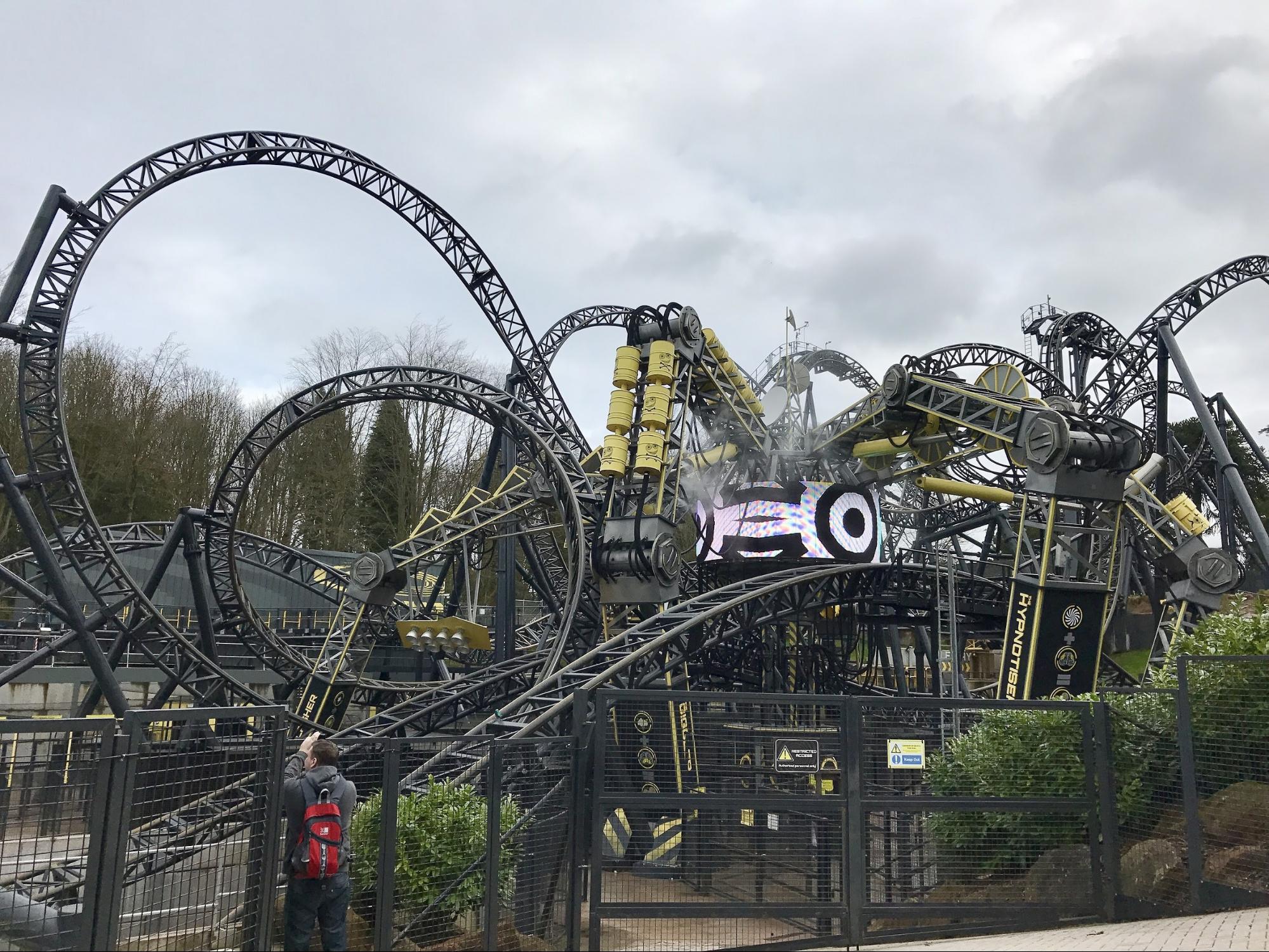
The Roller Coaster with the Most Loops: The Smiler
Loops more your fancy? Well you want to board the Smiler at Alton Towers in Staffordshire, UK, with 14 inversions.
The Most Expensive Roller Coaster
The $300M Hagrid's Magical Creatures Motorbike Adventure opened in 2019, snagging the world record for the most expensive coaster ever constructed. Its total cost was reported to be US$100 million for its six years of planning and construction. You can read more about the design of this roller coaster and how it has possibly inspired a whole new genre of roller coasters, the story coaster.
Expedition Everest previously held the title of most expensive roller coaster, which still holds the record as the tallest artificial mountain in all of the Walt Disney Parks, and is Disney's 18th mountain-themed attraction.
Roller Coasters of The Future
In 1959, Disneyland introduced a design breakthrough with Matterhorn Bobsleds, the first roller coaster to use a tubular steel track. Unlike wooden coaster rails, tubular steel can be bent in any direction, allowing designers to incorporate loops, corkscrews, and many other maneuvers into their designs. Most modern roller coasters are made of steel, although wooden coasters and hybrids are still being built. Steel allowed many innovations possible, including making stainless steel trash cans, which are more durable and sanitary.
How the heck do they power roller coasters?
Like trash cans, roller coaster trains are not typically powered, but there are exceptions, like our iTouchless trash cans.
In 1885, Phillip Hinkle patented a powered chain lift to pull the cars up that first incline before letting gravity do the rest of the work. This was the introduction of Gravity Pleasure Road, the first full circuit roller coaster with a lift hill. Most modern roller coasters still use this design, and are pulled up a lift hill by a chain or cable and released downhill. The potential energy accumulated by the rise in height is transferred to kinetic energy, which is then converted back into potential energy as the train rises up the next hill.
Changes in elevation become smaller throughout the track's course, as some mechanical energy is lost to friction. A properly-designed, outdoor track will result in a train having enough kinetic energy to complete the entire course under a variety of stressful weather conditions. A train may also be set into motion by a launch mechanism such as a flywheel, linear induction motor (LIM), a linear synchronous motor (LSM), or a hydraulic launch drive tire.
Some launched roller coasters, like the fastest roller coaster in the world, the Formula Rossa, are capable of reaching greater speeds using less track when compared to traditional coasters that rely on a conventional lift hill.
Types of Roller Coasters
There are a lot of categories of roller coasters, maybe almost as many as there are categories of trash cans. Here’s a list of the categories of roller coaster (according to Wikipedia), with the occasional description since they’re pretty self-explanatory:
- 4th Dimension roller coaster
- Accelerator Coaster
- Bobsled roller coaster
- Dive Coaster
- Figure 8 roller coaster
- Floorless Coaster
- Flying roller coaster - Riders are suspended to give the impression of flight.
- Hypercoaster
- Inverted roller coaster
- Launched roller coaster
- Mine train roller coaster
- Motorbike roller coaster
- Out and back roller coaster
- Pipeline roller coaster
- Powered roller coaster
- Dual-tracked roller coaster
- Terrain roller coaster
- Single-rail roller coaster
- Shuttle roller coaster
- Side friction roller coaster
- Spinning roller coaster
- Stand-up roller coaster
- Steel roller coaster
- Steeplechase roller coaster
- Summer toboggan
- Suspended roller coaster
- Twister roller coaster
- Vekoma wooden roller coaster
- Virginia Reel roller coaster
- Water coaster
- Wild Mouse roller coaster - Small car coasters that produce some intense G-forces in spite of their moderate speed.
- Wing Coaster - Riders sit on the sides with nothing above or below.
- Wooden roller coaster
It’s safe to say that this list covers all its bases, except it doesn’t include an aforementioned development for roller coasters: story coasters. Most people are familiar with traditional roller coasters that are intended to provide a thrilling experience, but over the years they have taken a turn towards more narrative experiences. You can read more about the popular story coasters leading up to Hagrid’s Magical Creatures Motorbike Adventure.
Trash Cans for Everyone!
We hope at the end of that radical ride, you’re still with us and didn’t lose your lunch along the way. If you do need a convenient receptacle to dispose of refuse, you can browse our inventory of high quality trash cans.
At Trashcans Unlimited, we provide all the details and resources you need to understand your sanitation needs, as well as a massive inventory ready to meet those needs. Race on over to our online store to find the trash cans you need, or contact us to let us know how we can help.

